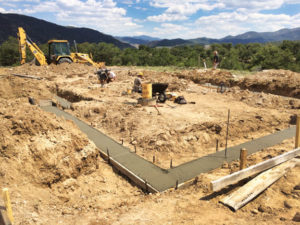By John Mattingly
Note: This is first of a three-part series looking at the tension points between economic growth and environmental conservation.
The November 6, 2018 election will host a ballot measure 1A, promoted by THISisChaffee.org, which claims voting “YES on 1A” will help protect forests, waters, and working lands. Four glossy pages of pictures and text, also available on a website, tell us why we should support those who support what we all love about Chaffee County. Sounds wonderful, but the particulars of who is going to protect our love are notably absent.
Colorado citizens know by now that when it comes to ballot measures (BMs), invoke the Nancy Reagan Rule, “Just say no.” Or, be sure to read the fine print and do a little poking. The “Yes on 1A” website does not post the actual BM, instead singing platitudes that carry the tune of NIMBYs seeking public funds to protect their own resources, keep others from accessing them and perhaps enshrine their hobbies while giving themselves reliable, non-strenuous employment as “stewards,” aka professional finger-waggers.
That sounds harsh, yet BMs have been known to bury particulars in the authorizing legislation that result in unintended negative consequences and occasionally, are downright corrupt.
Though examples are numerous, expansion of the Sand Dunes National Monument to a National Park comes to mind. Parking the monument was promoted as a way to “protect Valley water” from California and Denver when those threats were never real. The obstacles of existing law, Interstate Compacts, mountain ranges, historical use, exchange complexities, and the specter of multiple environmental impact statements made the export of Valley water highly unlikely.
Colorado’s representatives in Congress and other interested parties sold this dubious threat so effectively that the Baca Grande Ranch sold for $32 million at a time when its fair market value was perhaps around $8 million. Public access to the overpriced park is not much greater now than when the same space was a monument and a private ranch. Worse, the feds then tried to expand the park’s ground water rights by appropriating out of priority in violation of state water law.
But worst of all, it may be that the real political machinery in the Monument-to-Park movement worked for the lenders and venture capitalists who had invested around $30 million in Gary Boyce’s ridiculous water export project and needed to be “made whole.” I wrote about all of this in Colorado Central some ten years ago. I was the first to object to the feds expanded groundwater applications on the park and was eventually joined by others who finally defeated the federal grab.
Clearly, this manifest is a particularly warty irony that went largely ignored by the public who paid for it. The ranch that became the park was bought to protect the water from export, but was sold to the only party who could realistically export the water.
Point being: Know the particulars behind the promotional content of a BM, just to clear all the smoke that has been blown up our pantlegs, especially now, in times of “truth isn’t truth,” and facts have alternatives.
In my opinion, the noblest of BMs depend on voters who don’t have the time or disposition to be more than marginally informed and will thus vote and/or act in response to dramatically superficial slogans like “protecting forests, waters, and working lands.” To vote against forests and water and land is just plain wrong, and voters tend to hope that something good might happen from giving money to such an effort. It might, but again it all depends on the particulars.
There are already substantial governmental agencies at all levels that have the authority, but seldom the political will, to do things that might actually create more incentives to prevent, or at least slow, the steady degradation of our forests, waters and lands. The fact is, there is little chance of changing the current economic religion from growth-at-any-cost to sustainability-at-a-fair-price. Future columns will suggest why this appears to be the case, absent the unforeseen.
In the meantime, BMs always deserve suspicion, especially when the purpose is to protect … anything. Not that all such efforts are misguided, but there is a tendency among some protectionists to engage in political nagging: “You need to fix this, you need to do that. It’s really, really bad out there with all the growth and congestion and lack of housing and fires and floods, so let us protect your forests, your water, your land. Give us authority and a revenue stream and we’ll take care of it from there.”
The current undertow of “America First” protectionism now raging in our culture is perhaps, in part, a reaction to high-minded BMs. When elites start nagging and finger wagging and offering to protect us, our democracy usually responds with a political temper tantrum. May a word to the wise (a word that rhymes with Bump and Rump and Dump) be sufficient.
John Mattingly cultivates prose, among other things, and was most recently seen near Moffat.

